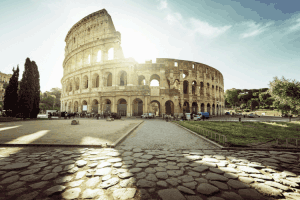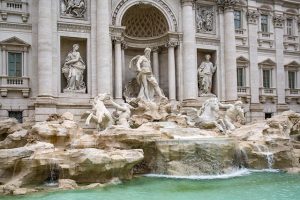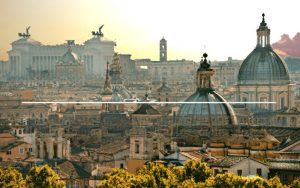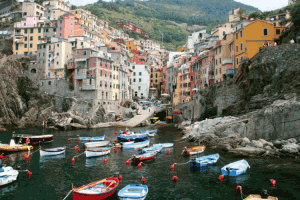Lying at the foot of Mount Vesuvius, Pompeii is an ancient, ruined city known the ancient volcanic eruption. This eruption covered the city in pumice stone and ash. Pompeii stands out among the fine examples of a true Roman town and its amazing lifestyle as part of the erosion process over centuries. We bring you some of the best things to do in Pompeii that can help you uncover the hidden facets of this antique ruined city.
Is Pompeii Italy Worth Seeing?
Pompeii is absolutely worth seeing if you have any interest in Roman history or archaeology. As one of the world’s most famous archaeological sites, Pompeii offers a unique window into daily life during the Roman Empire. In 79 AD, Mount Vesuvius erupted and buried the entire city in ash and pumice, preserving it for centuries with remarkable integrity. Walking the streets of Pompeii truly feels like stepping back in time.
You can see well-preserved buildings, paintings, mosaics, artifacts, and even human remains that capture a moment in time from nearly 2,000 years ago. Beyond the ruins themselves, the dramatic story of the city being instantly frozen at the peak of its prosperity only to be rediscovered centuries later is fascinating.
What to see at Pompeii
Pompeii offers visitors an amazing glimpse into everyday Roman life in the 1st century AD thanks to the remarkable preservation of the city after its burial under volcanic ash and pumice. Be sure to walk along the ancient streets to see the steppingstones for crossing during floods. You’ll be able to enter homes to see interior rooms and furnishings in place, as well as wall paintings and mosaics. Don’t miss the thermal baths with their changing rooms, furnaces, and marble details. One of the most iconic sites is the plaster casts of victims in their final poses during the eruption.
Additionally, you can tour ancient political buildings like the basilica and forum where decisions were debated and announced. Bakeries still have millstones and ovens used to make bread nearly 2,000 years ago! If interested in the seedier side of Pompeii, visit the brothel with its erotic wall paintings. The amphitheater is an elliptical arena where spectators watched gladiator battles. Be sure to walk out the main gate down the road lined with tombs to truly follow in the steps of the ancient Romans at Pompeii.
Ultimate Guide To Visiting Pompeii
1. Visit the Amphitheatre
You can count it among the best things to do in Pompeii. Amphitheatre has a rich history dating back to 80 BC. The massive theatre is one of the architectural marvels built by the Roman Empire, housing easily 12000 attendants. Explore this place early morning or during the late afternoons.
Opening Hours: 9:00 AM – 5:30 PM (last entry at 5:00 PM)
Tips for Visiting: Arrive early to avoid crowds, wear comfortable shoes as the ground is uneven, and bring a hat and sunscreen as there is limited shade. Guided tours are available and offer insights into the history and architecture of the Amphitheatre.
2. Explore the Antiquarium
This amazing museum is your answer to what to do in Pompeii if you are a history lover. Browse through the intense collection of interpretive displays, artefacts discovered during the excavations, and many art collections before the Roman era. In addition, it’s fascinating to discover daily lifestyle items like vessels, small household items, furnishings, and rows of the amphora.
Opening Hours: 9:00 AM – 5:30 PM (closed on Tuesdays)
Tips for Visiting: This museum houses artifacts found during the excavation of Pompeii, including frescoes, sculptures, and everyday objects. Allocate at least an hour to fully appreciate the exhibits. English language audio guides are available for rent.
3. Wander through the Forum
Exploring Forum is one of the best things to do in Pompeii as it is surrounded by colonnades and the Temple of Jupiter towards its north. A hot favourite here is the Macellum, which sells local delicacies for visitors. The Temple of Vespasian, Curia, and the Shrine of the Lares are other tourist hotspots.
Opening Hours: Open 24/7
Tips for Visiting: The Forum was the heart of public life in Pompeii, and its ruins offer a glimpse into the city’s political, religious, and commercial activities. Explore the Temple of Jupiter, the Basilica, and the Macellum (market). Note that portions of the Forum are undergoing restoration.
4. See the Garden of the Fugitives
Placed at the backside of Pompeii, the Garden of the Fugitives features an ancient vineyard where you will find 13 body casts of the local population which unfortunately couldn’t make it alive. So instead, these body casts are frozen in a grotesque and agonizing tableau that displays the true picture of the last final moments in the city.
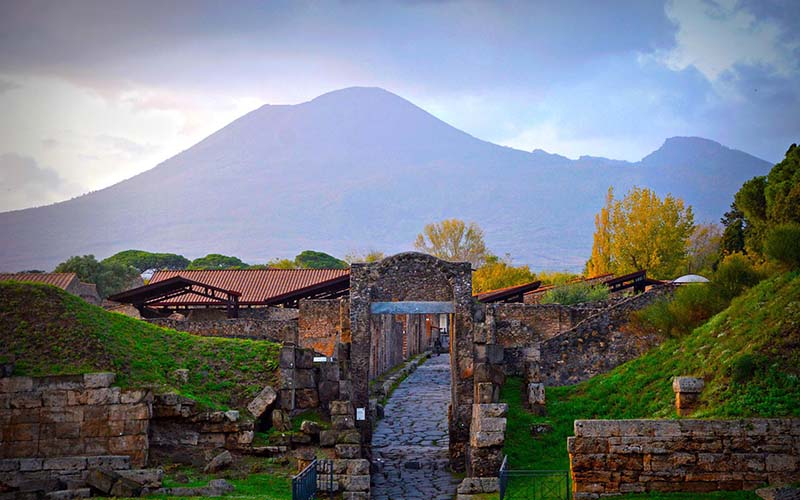
Opening Hours: 9:00 AM – 5:30 PM (last entry at 5:00 PM)
Tips for Visiting: This poignant site contains the casts of bodies frozen in ash during the eruption of Vesuvius, offering a sobering reminder of the tragedy. Be prepared for crowds and potentially upsetting imagery.
5. Marvel at the House of the Faun
This large house in Pompeii got its name derived due to the incredible statue in its front courtyard that was built during the 2nd century BC and detailed an intense artwork of a battle scene. This structure has undergone several rounds of weathering but still stands strong even today, better than many ancient Roman sites built during the same era.
Opening Hours: 9:00 AM – 5:30 PM (last entry at 5:00 PM)
Tips for Visiting: This opulent domus (house) boasts stunning mosaics, frescoes, and statuary, showcasing the wealth and artistry of Pompeii’s elite. Arrive early to avoid long lines and consider joining a guided tour for in-depth explanations of the artwork and architecture.
6. Tour the House of Menander
One of the well-preserved buildings in Pompeii is the House of Menander, where you get to see the wealthy nature of the house owner right from the entrance through the flanker pillars with Corinthian capitals. This historic site is the perfect answer if you ever want to know what to do in Pompeii. In addition, there is a small temple where rainwater collects to form a beautiful pool. A gorgeous painted colonnade decorates the interiors making it more appealing to the entire tourist population.
Opening Hours: 9:00 AM – 5:30 PM (last entry at 5:00 PM)
Tips for Visiting: This charming house features beautiful frescoes depicting Greek myths, including the story of Menander. Be sure to look for the mosaic of the chained dog, a symbol of fidelity. Combine your visit with the nearby Terme Stabiane baths for a full immersion in ancient Roman life.
Read More: Interesting Facts About The Roman Colosseum
7. Walk through the House of Sallust
This house easily counts among the oldest preserved houses in the entire city of Pompeii. Built in the 4th century BC, the House of Sallust encompasses royalty due to its privileged location and gigantic size. The upper floors have operated as an inn at some point in history. During your exploration journey, don’t miss out on browsing through the small garden, a fresco of the goddess Diana, the covered porch in the backyard, and the tiny treat shop.
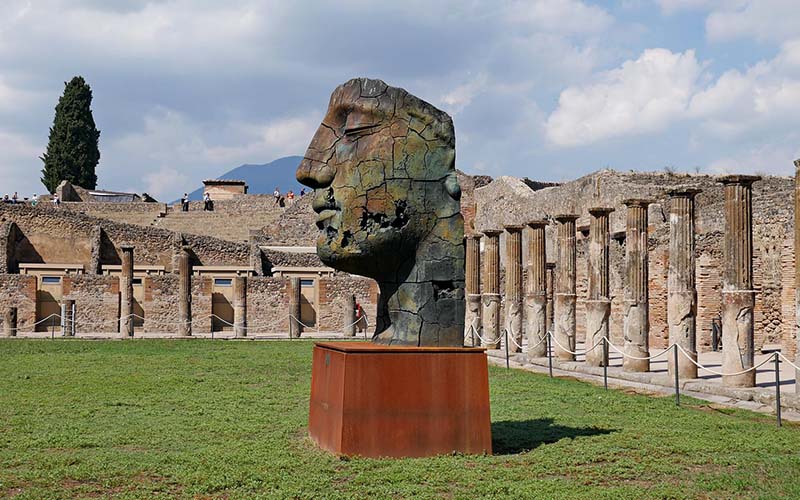
Opening Hours: 9:00 AM – 5:30 PM (last entry at 5:00 PM)
Tips for Visiting: This well-preserved house offers a glimpse into the daily lives of a wealthy Pompeian family. Explore the peristyle garden, the triclinium (dining room), and the cubicula (bedrooms). Look for the erotic frescoes in the “alcove of the lovers.”
8. Relax at the House of the Small Fountain
This gorgeous house features among the best things to do in Pompeii with its large back rooms, a marvelous artwork fountain, spectacular frescoes, and beautiful interiors displaying loud and clear opulence. The house uses several innovative and creative examples as part of its construction during their era with rainwater harvesting that can get converted into a beautiful fountain.
Opening Hours: 9:00 AM – 5:30 PM (last entry at 5:00 PM)
Tips for Visiting: This smaller house is notable for its charming interior decorations, including a delicate fountain and intricate mosaics. It provides a more intimate look at the living quarters of the middle class in Pompeii.
9. Admire the House of Venus in the Shell
Witnessing the colorful fresco of the goddess Venus among very few crowds counts among the best things to do in Pompeii. The house also features a detailed statue of Mars and a few gardens that were renovated and restored in the 1950s post the damage in World War II and when Vesuvius erupted.
Opening Hours: 9:00 AM – 5:30 PM (last entry at 5:00 PM)
Tips for Visiting: This house gets its name from the beautiful seashell fountain in the peristyle garden. It also features erotic frescoes and a well-preserved lararium (household shrine). Allocate at least 30 minutes to fully appreciate the decorations and layout.
10. Visit the House of the Vettii
This house was owned by two middle-class brothers who were doing well for themselves and lived in this charming well-decorated home that is visible through the displayed artefacts. It features some of the best frescoes, marble interiors, a fresco painting, a replanted garden, some small cooking utensils in the kitchen, and a long frieze of cupids covering the walls.
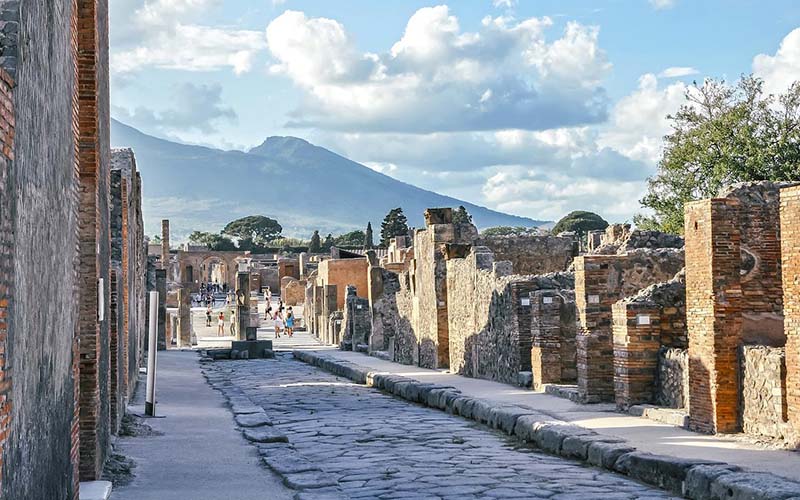
Opening Hours: 9:00 AM – 5:30 PM
Tips for Visiting: As the House of the Vettii is currently undergoing restoration, limited access might be available depending on the ongoing work. Check the official website or contact the visitor center for information on current accessibility and tour options.
11. Explore the Nuovi Scavi
Wall paintings and furnishings decorate the interiors of this new excavation. The balconies of the houses belonging to the merchants have been well preserved by girders giving a perfect sense of how houses looked two decades ago. You can look to explore the furnishings, frescoes, mosaics, election posters, statues, and simple inscriptions on the walls. The dyer’s workshop, an ironmonger’s shop, and fullers are something that you should miss out on during your visit.
Opening Hours: 9:00 AM – 5:30 PM (last entry at 5:00 PM)
Tips for Visiting: This section showcases recently excavated areas of Pompeii, offering a glimpse into ongoing archaeological discoveries. Expect fewer crowds and a sense of exploration compared to the more prominent sites. Guided tours offer insights into the ongoing excavation process and the latest finds.
12. Stroll down the Street of Tombs
Imposing funeral monuments decorating the road from Herculaneum Gate on the road leading to Herculaneum along the borders of Pompeii is among the most impressive surviving example of the Roman era. The large Villa of Diomedes, among the most popular ones, features towards the northwest end and is decorated with an intense garden surrounded by a long portico. The Villa of Diomedes featured several bodies of the people who couldn’t survive during volcanic eruptions.
Opening Hours: Open 24/7
Tips for Visiting: This ancient necropolis, or street of tombs, offers a fascinating look at Roman burial practices. Walk along the Via Appia and admire the variety of tombs, from simple family mausoleums to elaborate monuments. Note that some tombs may be temporarily closed for restoration.
Suggested Read: Mesmerizing Street Art of Italy
13. See the Temple of Isis
The cult of an Egyptian goddess was well renowned during the Roman era and is placed on the east of the Little Theatre. This temple was renovated in the second century BC. Unfortunately, a massive earthquake in AD 62 destroyed the structure, leading to massive restoration efforts to what is evident today. Don’t miss the courtyard centre nestled by porticoes and the inscriptions painted on the walls by a popular French novelist, Stendhal, in 1817.
Opening Hours: 9:00 AM – 5:30 PM (last entry at 5:00 PM)
Tips for Visiting: This well-preserved temple dedicated to the Egyptian goddess Isis was a popular pilgrimage site in ancient Pompeii. Explore the sacred precinct, admire the painted statues, and learn about the mystery cult associated with Isis.
14. Witness the Stabian Baths
The largest well-preserved baths in Pompeii city are the Stabian Baths. You are welcomed into a collonaded palaestra, a luxurious swimming pool, and separate male and female baths separated by the stoves that heat the water. You will get provisions for cold baths, changing with clothing racks, warm baths, and a hot bath heated by air ducts on the walls and the floor, making it among the best things to do in Pompeii.
Stabian Baths: Immerse Yourself in Ancient Roman Wellness
Opening Hours: Open 9:00 AM – 5:30 PM (last entry at 5:00 PM) / Closed on Tuesdays
Tips for Visiting: The Stabian Baths are a popular attraction, so arrive early or consider visiting during less busy times like weekdays or mornings. Purchase a combined ticket for access to the Stabian Baths and other archeological sites for better value and skip-the-line options. You should also be prepared for walking on uneven surfaces and potentially damp areas. Wear comfortable shoes and clothing that allows for light movement.
15. Explore the Villa of the Mysteries
Counted among the finest surviving structures built in the second century BC and is featured among the UNESCO World Heritage sites. This villa features several well-preserved wall paintings, frescoes, and original vibrant colors decorating the interiors with the 17-meter-long gigantic frieze remains the highlights. Unfortunately, you will have to pay an admission fee to explore this historic destination.
Opening Hours: Open 9:00 AM – 5:30 PM (last entry at 5:00 PM) / Closed on Tuesdays
Tips for Visiting: Due to the delicate frescoes and limited visitor capacity, consider booking your tickets in advance, especially during peak season. Opt for a guided tour for a deeper understanding of the frescoes, their symbolism, and the mysteries surrounding the initiation rite depicted. Photography is usually allowed, but flash usage and tripods are prohibited to prevent damage to the fragile frescoes.
How to Get to Pompeii
Pompeii is located near modern day Naples in the Campania region of Italy. It enjoys excellent transport links which make getting there easy and straightforward. Here are the best options:
Train Taking the train is one of the most popular and easiest ways to reach Pompeii. High-speed trains whizz from Rome or Naples to Pompeii in around 30-45 minutes. Trains go direct to the Pompeii Scavi-Villa dei Misteri station, which is right next to the archaeological site entrance, just a couple of minutes’ walk away.
Bus If you’re already based in Naples, you can take regular buses that shuttle tourists from Naples Central Station to Pompeii every 30 minutes. The journey takes around 35-45 minutes. Tickets can be bought on the bus and cost around €3 each way.
Car Driving to Pompeii from Naples, Rome or Salerno takes between 45 mins to 1.5 hours depending on traffic. The car park for visitors is just a short walk from the site entrance. Having your own car does provide the most flexibility to visit at your own pace.
Tours A simple way to visit is by joining organized day trips from Naples or Rome which include return travel by coach or train plus skip-the-line entry tickets and either self-guided audio tours or tour leader. This hassle-free option means transport and entry tickets are sorted for you.
So, in summary, getting to Pompeii is smooth and quick whether you take a short train ride or drive from nearby cities like Naples. And you have alternatives ranging from public transport to private tours.
What to bring on a trip to Pompeii
When visiting the ancient Roman city of Pompeii, destroyed by the eruption of Mount Vesuvius in 79 AD, there are some essential items you’ll want to bring to make the most of your trip. Be sure to pack comfortable walking shoes, as you’ll be on your feet exploring the large archaeological site. Bring a hat and sunscreen to protect yourself from the hot Italian sun. You’ll also want to carry water to stay hydrated.
Don’t forget your camera to photograph the incredibly preserved buildings, artwork, artifacts, and even human remains. Binoculars can come in handy for spotting intricate details on structures only viewable from a distance. Consider bringing a small backpack to carry your personal items while keeping your hands free.
Some other useful things to include are a map and guidebook of Pompeii to help orient yourself, phrasebooks and travel dictionaries if you don’t speak Italian, cash for admission fees and souvenirs, and snacks/water if you plan on spending the entire day exploring the ruins. Packing lightly is recommended since you’ll be walking a lot, but having the right gear will make experiencing this archaeological wonder much more enjoyable.
Tips for Visiting Pompeii
Pompeii is one of Italy’s most fascinating and popular archaeological sites. Here are some tips to make the most out of your visit:
- Book tickets in advance – Pompeii gets very busy, especially in summer. Booking skip-the-line tickets online will save you time waiting in long queues. Opt for early morning or late afternoon tickets to avoid the largest crowds.
- Wear comfortable shoes – There’s a lot of walking involved at Pompeii across uneven streets and terrain. Having proper footwear will make exploration much more enjoyable.
- Bring a hat and sunscreen – There’s not much shade so carrying protection against sun exposure is advised.
- Pick up a map – Getting a map at the entrance will help you navigate the large site across the different districts and find key landmarks.
- See the Pompeii Forum & Temples – This large plaza was the city’s religious, political and commercial hub with temples like the Temple of Jupiter and the Temple of Apollo.
- Explore the homes and shops – Wander around the houses like The House of the Faun and Vetti’s House to witness the rooms, paintings and artifacts left behind.
- Pack foare & water – There are a couple of small food stalls but bringing your own snacks and drinks is recommended.
- Join a guided tour – Considering getting an audio guide or joining a guided tour for a more informative and rich experience learning about different aspects of the city.
Visiting Pompeii – Frequently Asked Questions
Here are answers to some frequently asked questions about visiting the archaeological site of Pompeii:
Where is Pompeii located?
What transport options are there to get to Pompeii?
Where is the entrance and how much are Pompeii tickets?
How much time do you need for visiting Pompeii?
Should you hire a Pompeii tour guide?
Also Check: Italy Visa Checklist And Requirement
